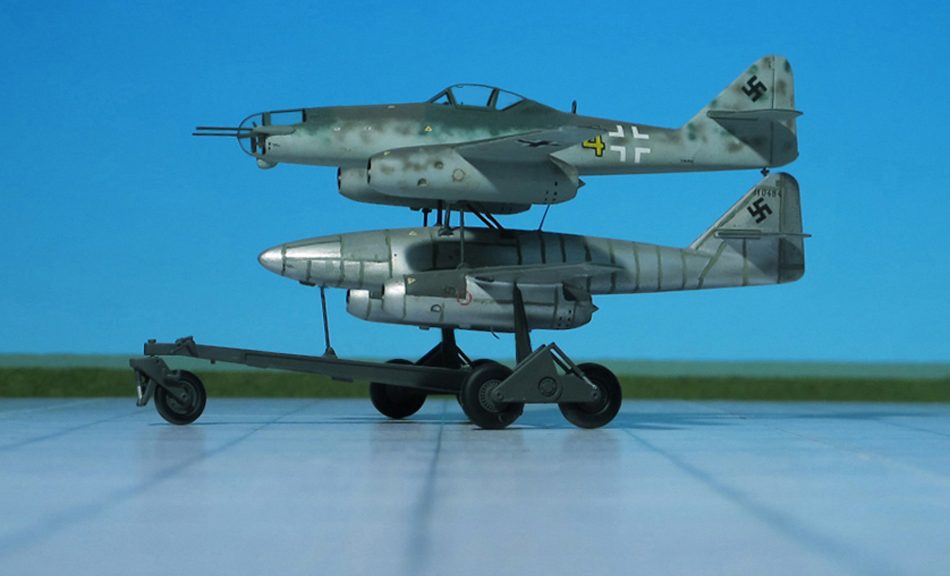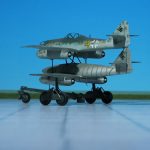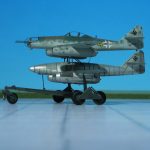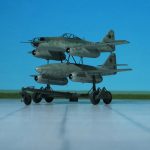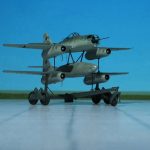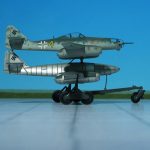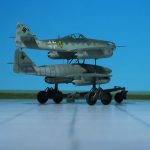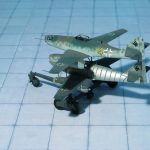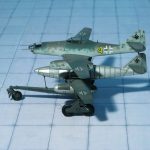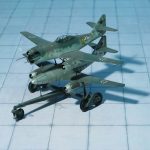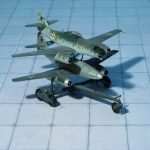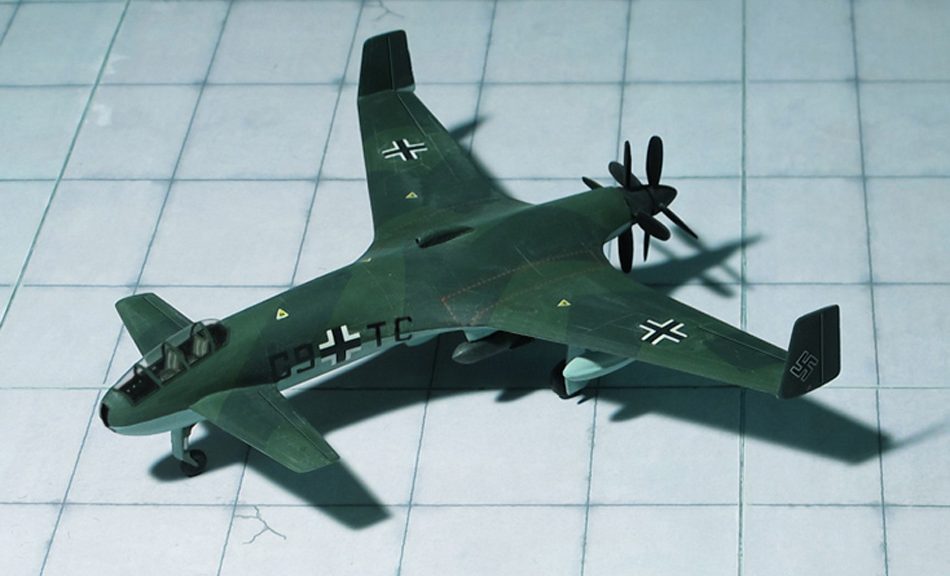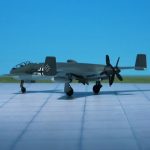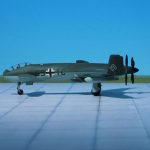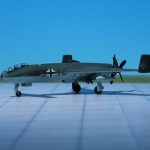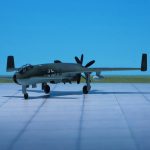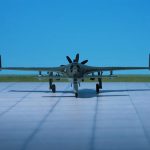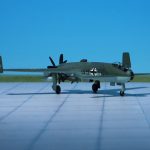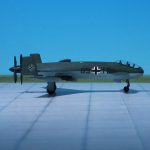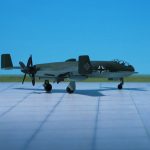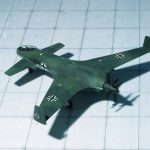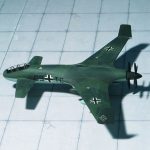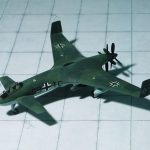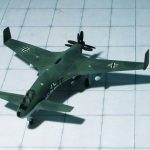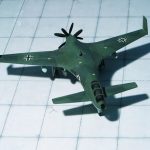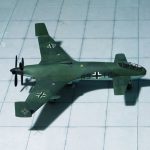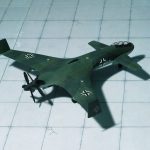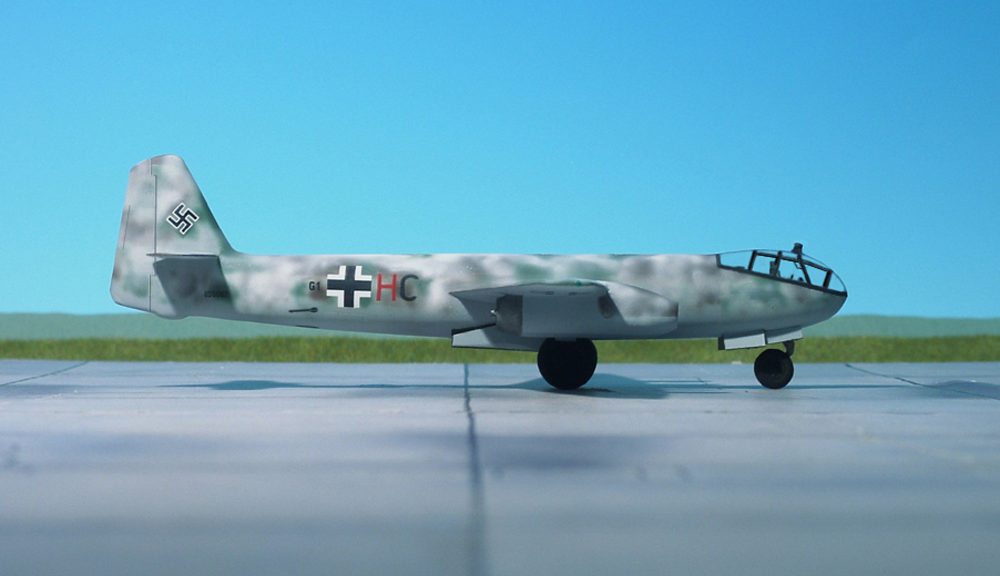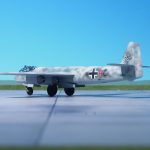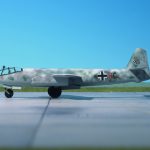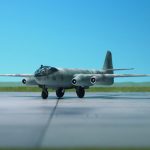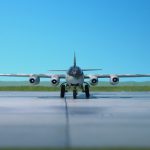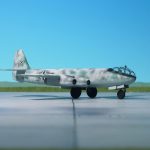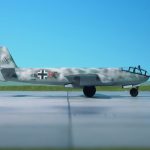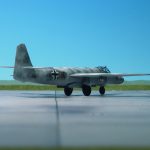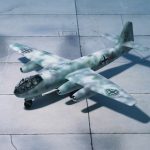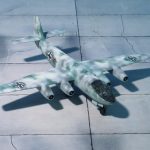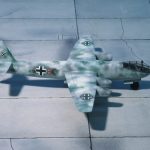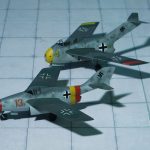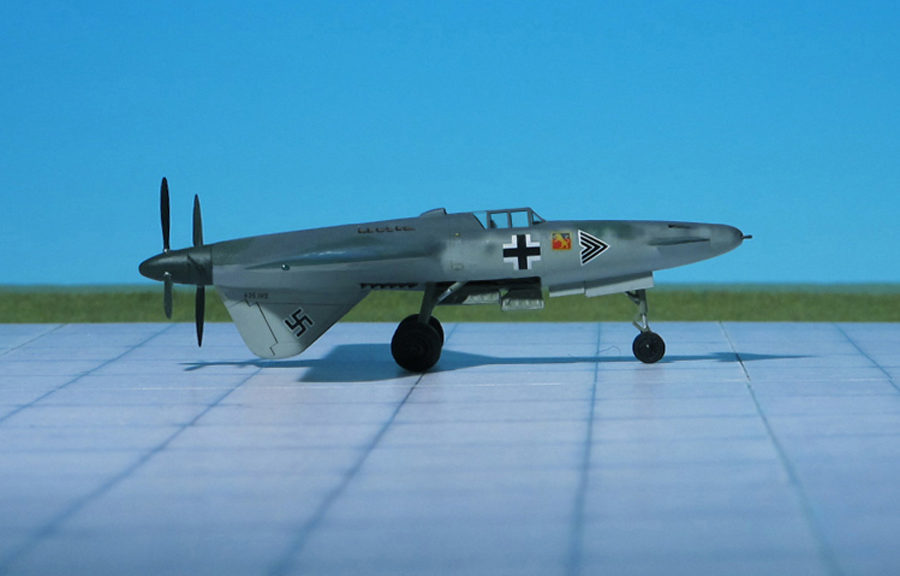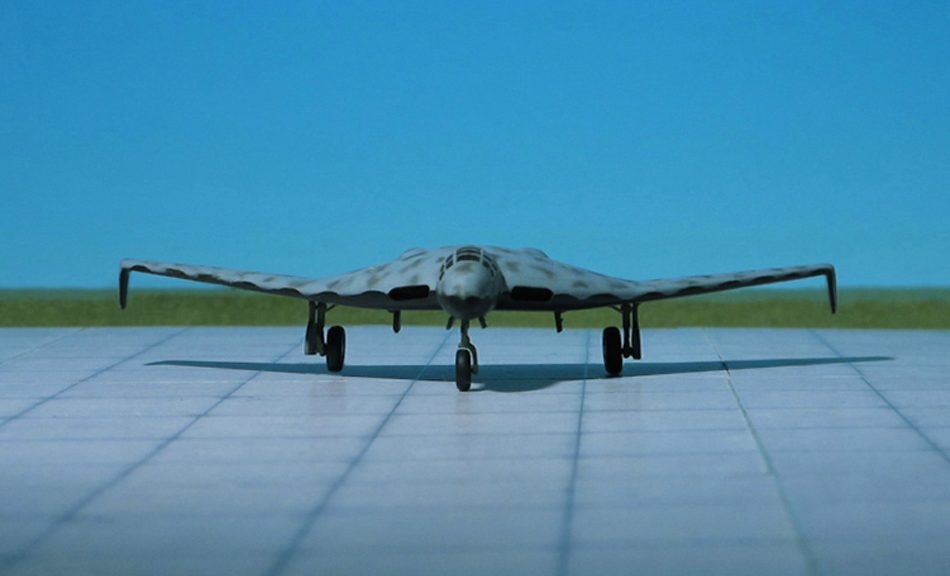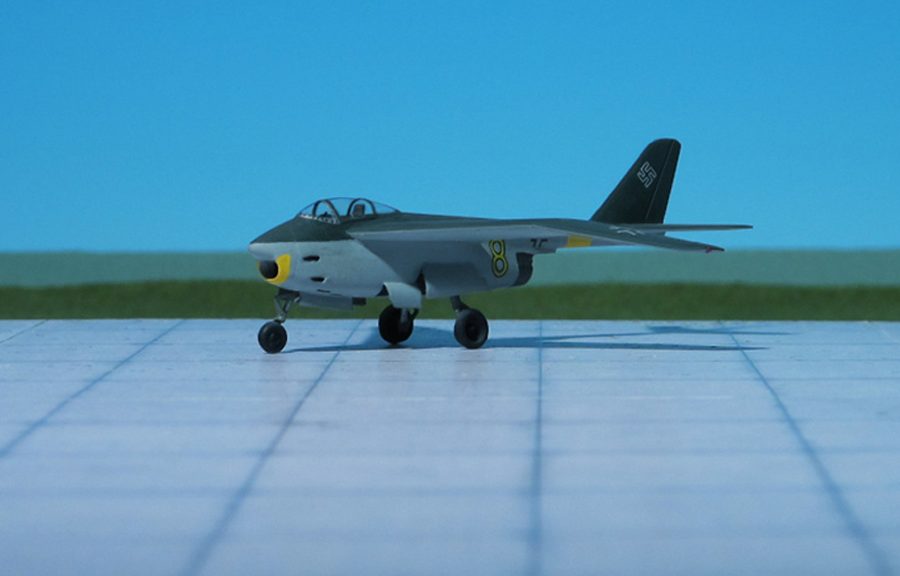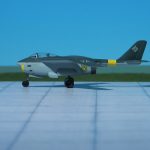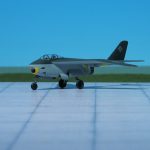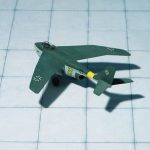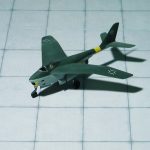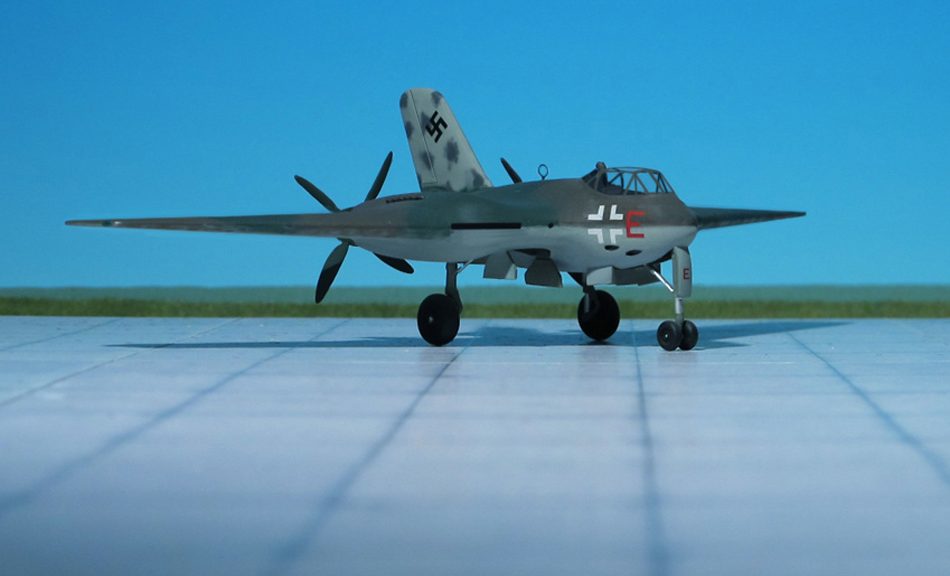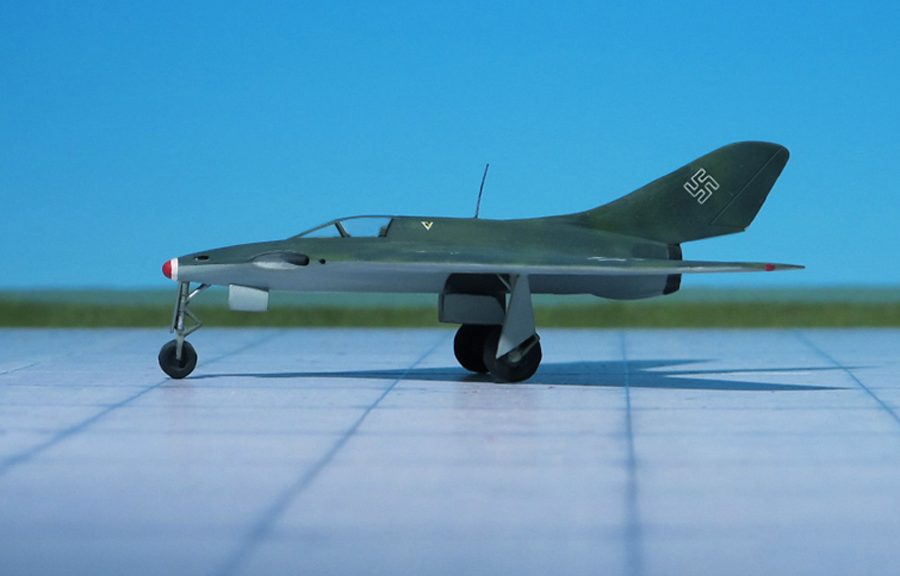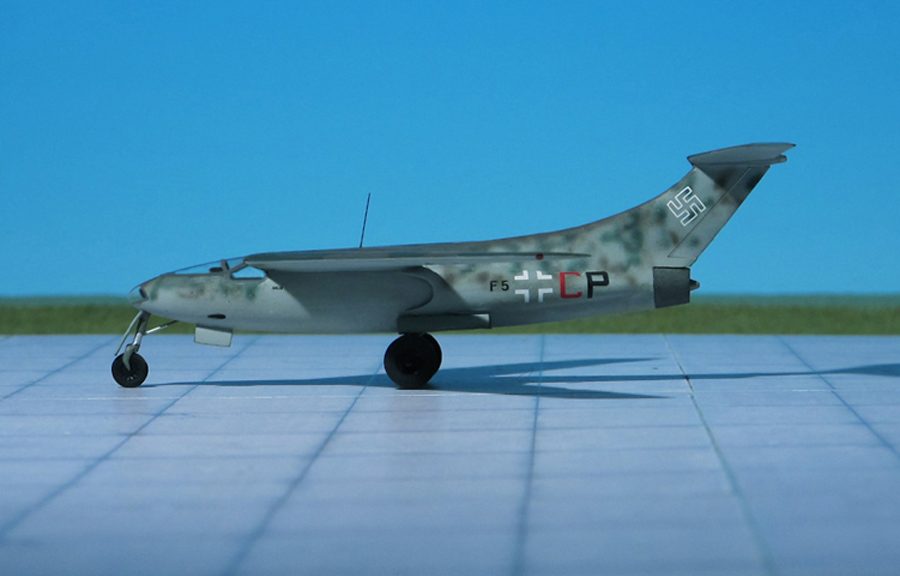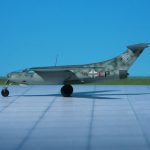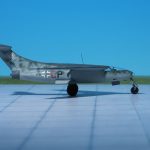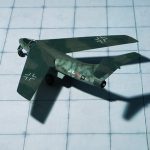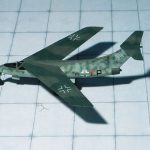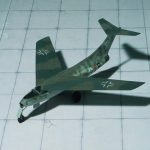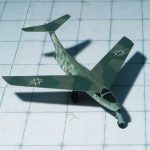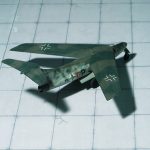TYPE: Anti-ship and -fortification destroyer Messerschmitt Me 262A-1a missile. Project
ACCOMMODATION: Crew of two in Messerschmitt Me 262A-2a/U-2 only
POWER PLANT: Two Junkers Jumo 004B turbojet engines each aircraft, rated at 950 kp thrust each
PERFORMANCE: No data available
COMMENT: In the last stage of WW II in Europe the RLM made great effort to deploy a great variety of composite aircraft (“Misteln”, “Mistletoes”) against enemy ground installations, troop concentrations, harbor facilities, bridges, ships, etc. and even bomber formations. In most cases elder or not for service qualified aircraft were used as un-manned, lower bomber compartment but also reconstruction of existing aircraft or complete new constructions – most made of non-strategical materials like wood etc. – were proposed. The bomber compartment was filled with explosives and guided to the vicinity of its target by a single seat fighter temporarily attached to a superstructure above the fuselage.
One of the extraordinary proposals was the combination of a Messerschmitt Me 262A-1a or Me 262A-2a/U2 as guide aircraft to an un-manned Messerschmitt Me 262A-1 as guided bomb. The cockpit canopy was faired over and all equipment stripped down to only those needed to keep the bomb flying. Nose of the aircraft was filled with explosive as well as two additional tanks setup in the fuselage. Three bomb load versions were proposed:
Model A. Armored nose of the fuselage and additional tanks filled with 4,460 kg of liquid explosive,
Model B: Armored nose formed of solid explosive, additional tanks filled with blocks of solid explosive, total amount restricted and
Model C: Armored nose formed of 2,450 kg solid explosive, additional tanks filled with 2,760 kg liquid explosive, total amount 5,210 kg.
The upper component of this “Mistel” composition – number of “Mistel” variant not clearly known – was a two-seater Messerschmitt Me 262A-2/U-2. Besides the pilot a second crew member was lying in prone position in a glazed nose section of the fuselage. He guided the bomb into the target by means of a television set “Tonne-Seedorf”. In the cone of the lower (bomb) compartment a television camera (“Tonne”) was installed and the radio operator had a television tube (“Seedorf”) with relative high resolution. By means of radio-control the missile was guided to the target.
The project was soon rejected. It became clear that a pilot of a Messerschmitt Me 262 had enough problems with his own machine and to handle two of these excentric aircraft together seemed to be impossible.
